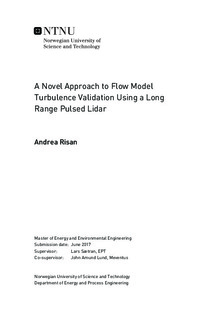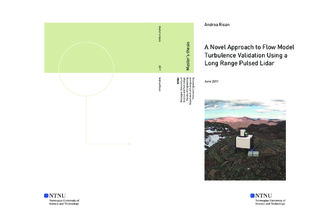| dc.description.abstract | Flow models are useful to predict wind conditions for wind energy production purposes. However, as wind power development expands into areas of even more complex terrain and challenging flow conditions, more research is needed to investigate the ability of such models to describe turbulent flow features. In this study, the performance of a hybrid RANS/LES (DES) model in highly complex terrain has been investigated. The model was compared with measurements from a long range pulsed lidar, which first were validated with sonic anemometer data. The accuracy of the lidar was considered to be sufficient for validation of flow model turbulence estimates. By reducing the range gate length of the lidar a slight additional improvement in accuracy was obtained, but the availability of measurements was reduced due to the decreased intensity of the backscattered signal. The DES model was able to capture the variations of velocity and turbulence intensity along the line-of-sight of the lidar beam but overestimated the turbulence level in regions of complex flow. | |

